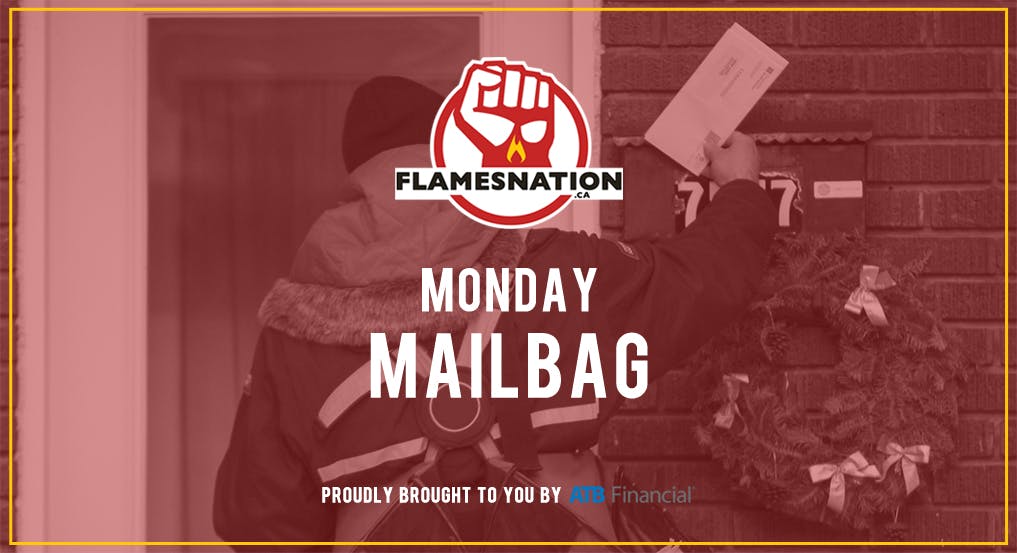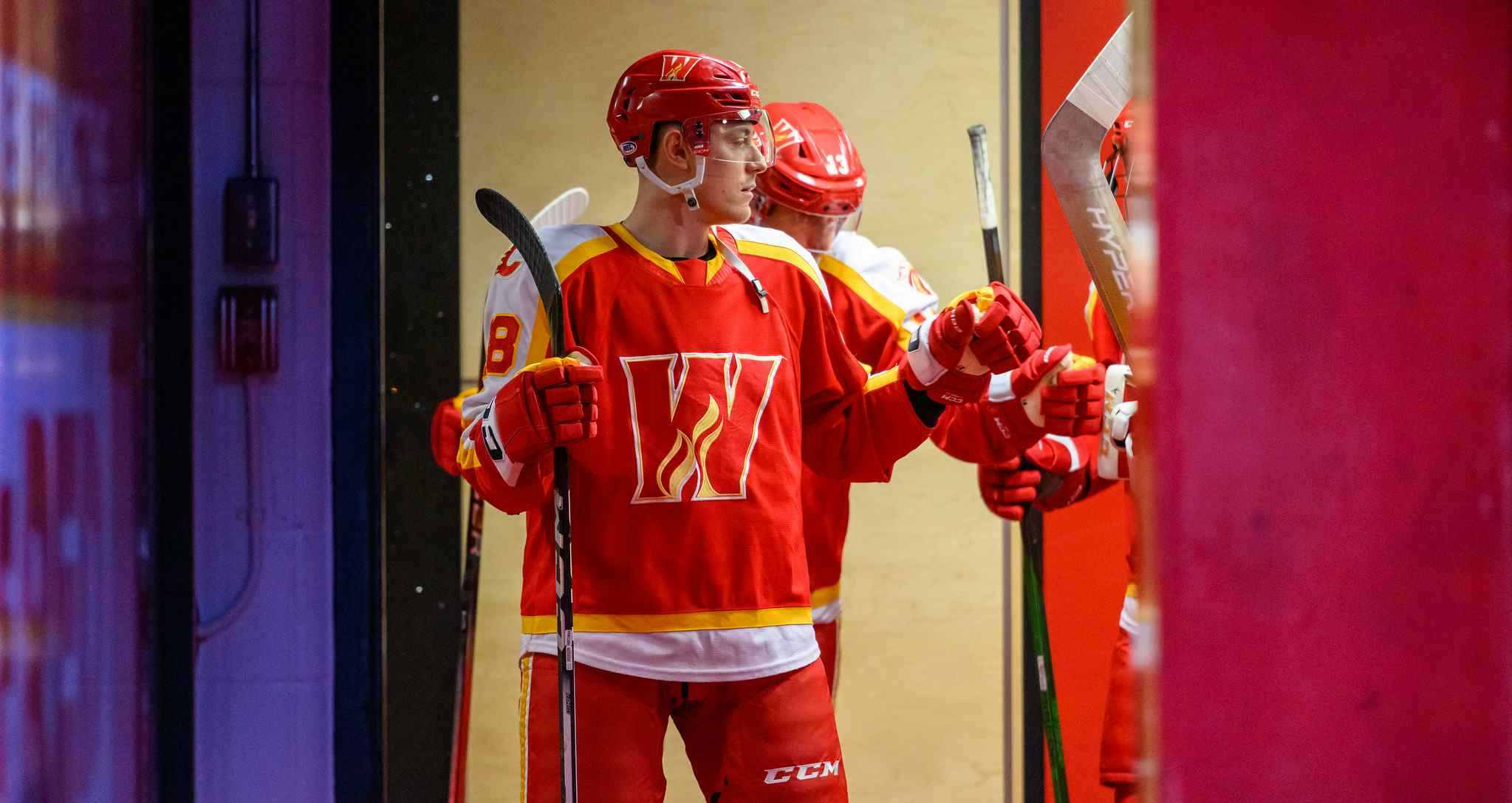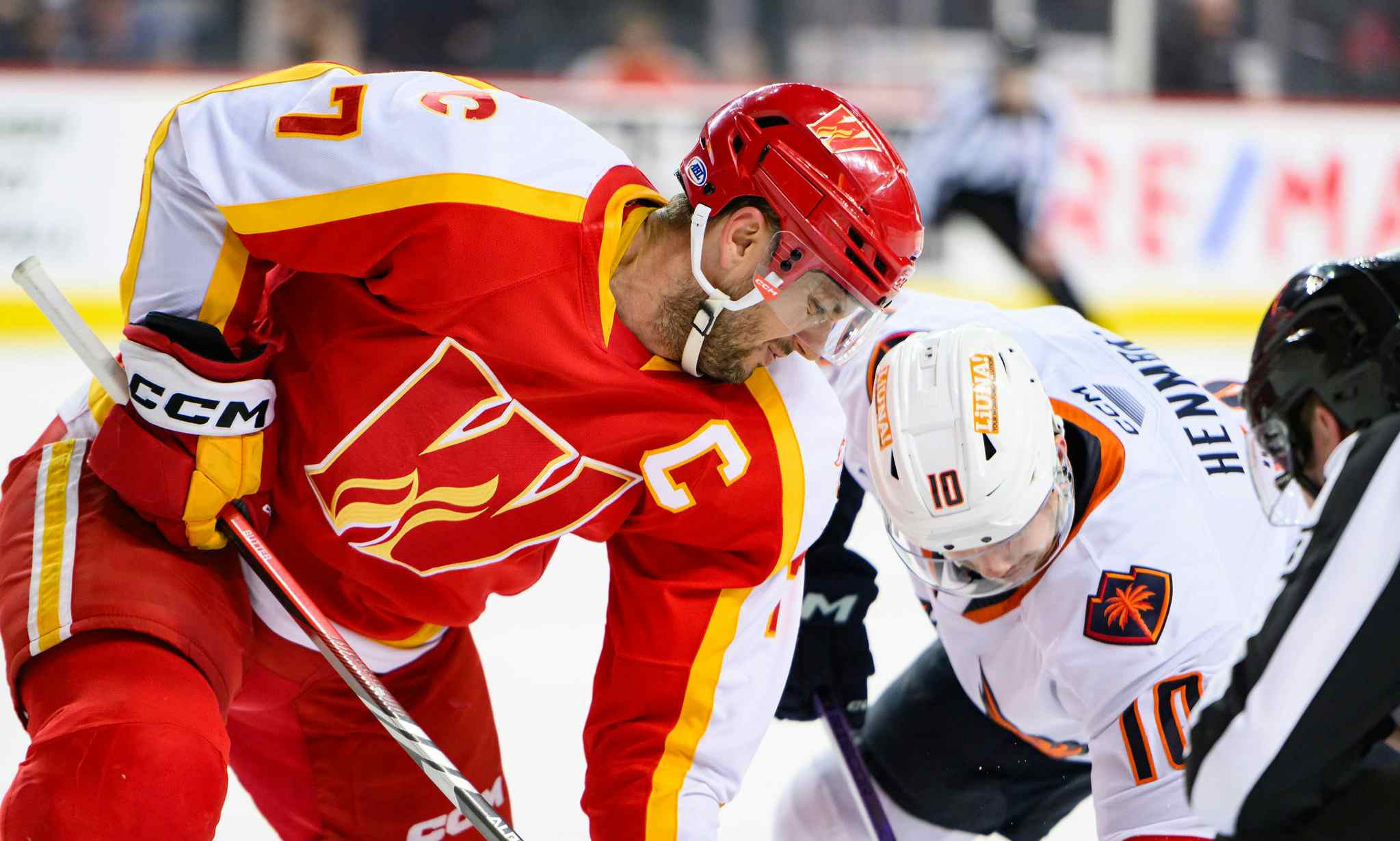FN Mailbag – March 13, 2017

By Kent Wilson
7 years ago
After the Flames’ difficult opening month this year, few people would have believed the team was on course to make the playoffs, let alone to set a franchise record for consecutive wins. Calgary’s unprecedented hot streak has not only been enough to propel them into the postseason, but they are now battling for home-ice advantage in the first round with Edmonton and Anaheim.
Huzzah! From contemplating another lottery finish to jockeying for playoff position in the space of four months. The Flames haven’t quite arrived as true contenders just yet, but this season represents a solid step towards that goal.
If the T.J. Brodie, Michael Stone pairing continues to work out, the Flames’ two main weaknesses will be their third defense pairing and their third line of Sam Bennett, Troy Brouwer and Kris Versteeg. Matt Bartkowski and Deryk Engelland have survived while the Flames have been hot, but it’s been entirely due to goaltending. In just 90 minutes together so far they’ve been outshot by 33 shot attempts, giving them a shot attempt ratio of 41%. That’s with the other two pairings doing most of the heavy lifting.
As for the Bennett line, their struggles are well documented by now. Together this year, Bennett and Brouwer have a CF% of 45 and a GF% of 42. The Flames have given over 60 more shot attempts than they’ve generated with Bennett and Brouwer on the ice together this year, despite facing mostly second and third lines and getting more offensive zone starts.
The real danger for the Flames is when the third line and third pairing end up on the ice together. If we throw Engelland into the Brouwer/Bennett mix, the Flames’ CF% drops to 41.
As a result, getting home ice advantage in the first round would go a long way to improving the club’s chances of victory. That way Glen Gulutzan has more opportunity to match lines and hide his lesser lights in the Dome.
There isn’t much separating CGY, EDM and ANA from an underlying numbers perspective. On paper, each team has clear strengths and weaknesses which the other could potential exploit.
The Oilers have Connor McDavid and a pretty good top end attack. They also have strong goaltending in Cam Talbot. Their depth forwards and most of their blueline, however, are less than enviable and they have no contingency plan in the crease if Talbot struggles or gets injured.
Anaheim, on the other hand, doesn’t have quite the top end up front. While Ryan Getzlaf and Corey Perry are still very good, they are no longer dominant and not in the same league as McDavid. I have time for Rickard Rakell, Jakob Silfverberg, and Ryan Kesler (puke), but the Ducks’ true strength is the backend.
Anaheim’s blueline features a handful of young, big, effective defenders and puck movers. Hampus Lindholm, Sami Vatanen, Josh Manson, and Cam Fowler is a quality, core group of guys.
In terms of matchups for the Flames, I might like the Oilers a little bit more. If Mikael Backlund’s line can at least slow down McDavid for a full series, it gives the rest of the Flames’ attack a chance to overwhelm Edmonton’s so-so depth and mediocre defense core.
We’ve pondered this question for months, but this is the first time it looks like retaining Brian Elliott is a real possibility. After a dreadful first half of the season, Elliott is suddenly one of the hottest goaltenders in the league and finally resembling the guy who put up one of the best save rates in the league last year.
Although he’s not going to continue this torrid pace, management will likely be very interested in another contract if he manages to be a quality starter down the stretch and into the postseason.
As for Johnson, it may depend on what the player wants out of his next contract. If he wants the chance to be a starter, he may have to look elsewhere. Otherwise, I can see the club re-inking him to another short-term deal as a backup.
The new second pairing featuring Stone and Brodie has been better, while the third pairing (as mentioned) has not. The real difference right now – and the thing driving perceptions in the MSM – is the Flames’ red hot percentages. When a club is riding a 110+ PDO over a few weeks, almost everything about the team looks great. The question is how will they look when the percentages regress?
We still don’t have a lot of info on these players, of course, but we’ll go with what we’ve got so far.
Brodie and Stone have a good possession rate (51.5%) as well excellent scoring chance (63.6%) and expected goal (57.0%) ratios. The latter two numbers will begin to fall towards their possession rate over time, but if they can stay at or above 50% by all of these measures, then it’s a big improvement.
Bartkowski and Engelland, however, are getting run over. They have sub-40% possession and scoring chance rates and a sub-30% XGF. No one has noticed this year because Elliott has stopped over 98% (!!) of the shots the third pairing has seen so far. Once he ceases to be super human, the duo is going to look hopelessly lost.
Aside – Engelland’s best partner over the last two season by these sorts of measures has been Brett Kulak. I suspect this is due, in part, to very careful management by GG when the two are together, but nevertheless one wonders why the team hasn’t given them another look.
This is tough because the top six with 3M and Gaudreau-Monahan-Ferland is probably where you want them to be. I am not terribly sure what to do with the bottom six in order to markedly improve it. I’d likely consider bumping Brouwer to the fourth line or the press box give his deleterious effect on just about everyone he plays with. That would bump Alex Chiasson up to the Bennett line with Versteeg, which is likely only a modest improvement.
Curtis Lazar is a wildcard but given his results this year is unlikely to be an improvement over Lance Bouma or any of the other tweeners in the org (like Freddie Hamilton or Garnet Hathaway).
Bennett is on pace for just 27 points this year after a 36-point rookie season. He is currently 10th on the team in scoring and is likely to be caught by Micheal Ferland (one point back) before the end of the season. That means he’s not going to have much leverage in negotiations beyond his pedigree as a fourth overall draft pick.
As such, I don’t think either party is going to push for a long-term pact. The Flames will likely argue for a two-year bridge deal and maybe Bennett’s side lobbies for a one-year contract. Either way, it wouldn’t surprise me to see his cap hit settle somewhere around $2.5-3.0M.
(For those unaware, here is the Big Gainer series: Chicago Blackhawks, New York Islanders, Los Angeles Kings, St. Louis Blues, Conclusion.)
Right now the Flames are sitting at 50.94 score adjusted CF% according to Corsica Hockey. That’s more than a three-point jump over last season (47.77) and nearly a seven-point jump over the season before that (44.10).
That level improvement definitely puts them in line with some of the teams I looked at in the Big Gainer series. For example, the Chicago Blackhawks jumped up just under 10 points over their three-season shift to contenders, whereas the Kings and Blues each jumped up about 5% over three years en route to contender status.
If the Flames finish the year with a CF% of about 51%, it will mark them as a team on the ascension. Of course, to take the next step into legit status, they will likely have to make one more move above the 52% ratio.
Recent articles from Kent Wilson





